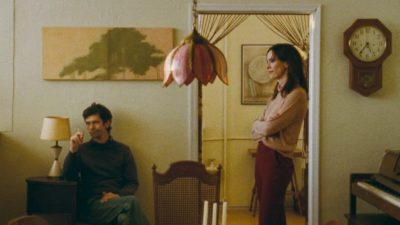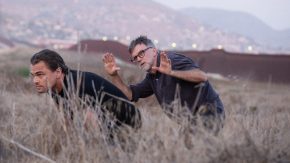Barely seven years old, a little girl in a small church in Oradea, in the St. Catherine estate started her career: she was playing Mary in the nativity play. Thanks to her stamina she strode confidently up the imaginary rungs of the opera world, until in 2016 she reached the highest possible: in the Metropolitan, New York, she was cast as Musetta in La bohème. Nowadays she accepts fewer roles, but she considers it an exceptional opportunity to appear on stage before a Hungarian audience. An extremely talented soprano, Brigitta Kele sings the leading role in Ferenc Liszt’s oratorio The Legend of St. Elizabeth on the opening night of the Budapest Spring Festival.
Brigitta Kele’s story is a modern fairy-tale, whose roots go all the way back to Transylvania. “My father was a poor tailor’s mate with five children. It was no easy task, but finally I got from the ‘Ér [a river in Romania and Hungary] to the ocean’ as the saying goes” she recounts. No wonder she quotes from the poet Endre Ady: just like him, her life too was greatly influenced by Nagyvárad, how Hungarians call Oradea.
There were five children altogether, the “three sisters” and the twin boys, but only the girls had music in their veins. “My elder sister was a cantor at church, and she was always encouraging me, sometimes demanding that I and my middle sister sing in the church, and actually it was there my career started. I had a considerable repertoire already when I was young, because many classical works are sung during the Catholic services.” She started studying music relatively late, but her zeal and talent helped her over the obstacles: she completed her bachelor’s degree at the Faculty of Music at the University of Oradea, and gained her master’s at the Gheorghe Dima Music Academy in Cluj-Napoca.
“At the time I was living in Budapest with a friend. We earned money by delivering papers. I thought I would get a job as a freshly graduated singer, but I was so timid and inexperienced that I chose to commute between the two cities.” She finally decided to move to Cluj-Napoca when she gained a place in the chorus of the Hungarian Opera of Cluj-Napoca. She “stood out” in the chorus, as she puts it, and surprisingly quickly got roles in serious pieces. “Beginner singers aren’t usually asked to sing in big operas, though I wasn’t that young, I must have been 25, when I got my first such part.” In spite of this she was perturbed at having started her musical training later than her contemporaries, but in retrospect she is pleased – she thinks she needed the “maturity” school leaving examination too in order for these roles to “find” her.

Szilvia Csibi
Colours for Five Lines
Ferenc Liszt was inspired to write The Legend of St. Elizabeth while looking at a series of frescos, but he is not the only composer to be spurred to compose by looking at a work of art. A surprisingly large number of composers are affected by a perceptual phenomenon known as synaesthesia, whereby a stimulation leads to a second kind of sensation. Perhaps the best known example is Mussorgsky’s piano cycle Pictures at an Exhibition, for which the Russian composer was inspired by a posthumous exhibition
of works by his painter friend Viktor Hartmann. Mussorgsky aimed to “repaint” Hartmann’s pictures in sound, on the basis of his own experience, and the most frequently performed orchestral arrangement of the work testifies to the orchestration skills of Ravel. A more indirect influence can be found in the symphony Mathis, der Maler (1934) by Paul Hindemith, with music which was then also used in the opera of the same name. Its three movements symbolize the panels in the sixteenth-century Isenheim Altarpiece, and the symphony’s programme follows the life of the altarpiece’s painter, Matthias Grünewald. Rachmaninoff’s symphonic poem Isle of the Dead (1909) was inspired by a famous picture by Swiss Symbolist painter Arnold Böcklin, who made the particularly thought-provoking picture to a commission from a widowed patron. The execution was so successful that it inspired other artists
apart from Rachmaninoff – indeed, by 1888 Böcklin himself had made five versions of his mystic work, and then added an antithesis entitled The Island of Life.
In 2011 she spent her seventh year as a member of the Hungarian Opera of Cluj-Napoca. She liked it there, but hankered after the international stage. “We knew it was expensive, for a singer at the beginning of their career going abroad to audition is almost impossibly burdensome financially. You have to fork out for the trip, the accommodation, and many places ask the applicants to pay an audition fee. I didn’t have the funds for that. But destiny had a hand in things.” The Düsseldorf Opera House was looking for new members for their company, and at the recommendation of a singer from Cluj-Napoca they came to recruit in the city. After singing only two arias Brigitta’s voice convinced the scouts from Germany so firmly that they invited her over for a rehearsal, which was followed by a contract.
From here on, her international career took off. After the first season in Düsseldorf she got a contract as a company member, and meanwhile she was appearing on stage in other countries too. In Paris she was cast as Nedda in Pagliacci, in Israel she sang Micaëla in Carmen, and she has performed in Avignon, Beijing, and Strasbourg. It was there that Eva Wagner, Artistic Consultant of the Metropolitan Opera, noticed her and was so taken by her performance that she offered her a contract for the “super stage”, for the 2016-2017 season.
“It was fantastic to take part in such a production, and the audience were very enthusiastic. I played Musetta, and fortunately they were satisfied with me. Now I’m waiting for further developments. I’m often asked what it’s like to sing in New York after Oradea. I usually say that it’s special, but I don’t feel any basic difference between them.”
Now an international freelance, she has committed herself to a contract at the Hungarian Opera of Cluj-Napoca, which is where she had her roots. “After five or six years it’s good to have a rest. It’s tiring to live out of a suitcase, sleeping in a different room all the time. The consumer society has turned music life into a conveyor-belt existence. And that wears people out – psychologically, and vocally”, she adds. This however, does not mean she is restricting herself as an artist, and the public can happily mark in their diaries the date 30 March, when Brigitta Kele can be heard in the leading role in the oratorio The Legend of St. Elizabeth at the opening concert of the Budapest Spring Festival, which each year concentrates on Ferenc Liszt’s oeuvre. “I’ve sung it twice before, but I’m pleased, because each time I feel it to be a challenge. It’s a dramatic role, a serious undertaking, which you have to experience. As a Catholic the story and character of St. Elizabeth is very close to me. I hope my preparations are worthy of it!”
Author: Dóra Melis
This article first appeared in BSF Magazine, published by Budapest Spring Festival. To view the magazine in full, please click here.

























Comments